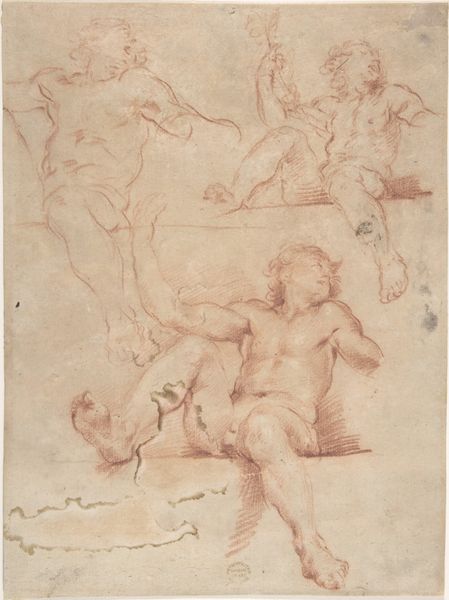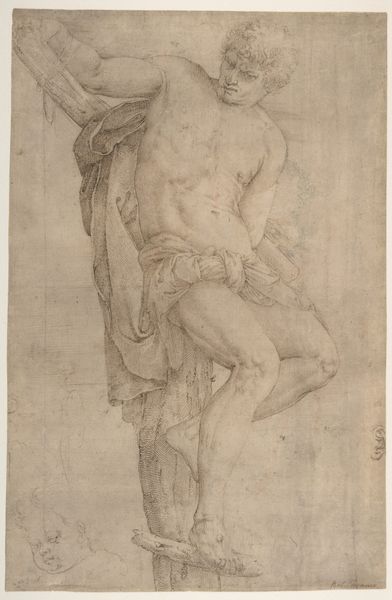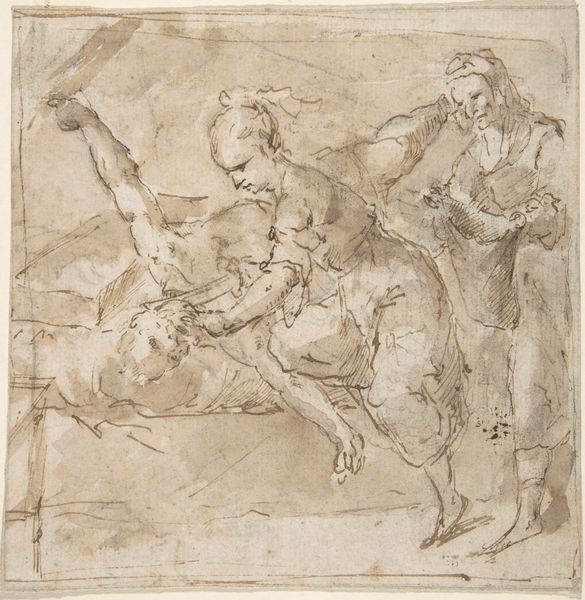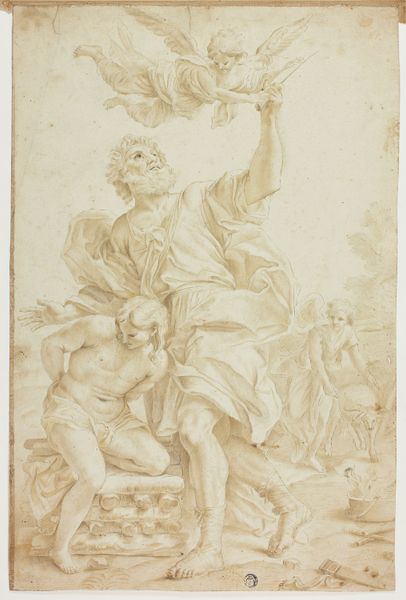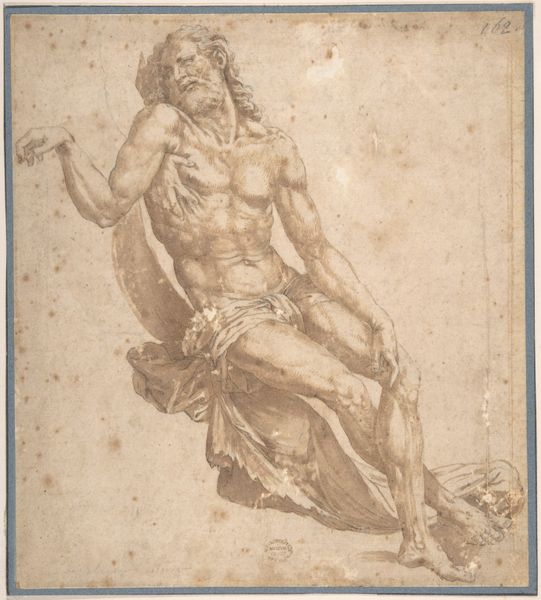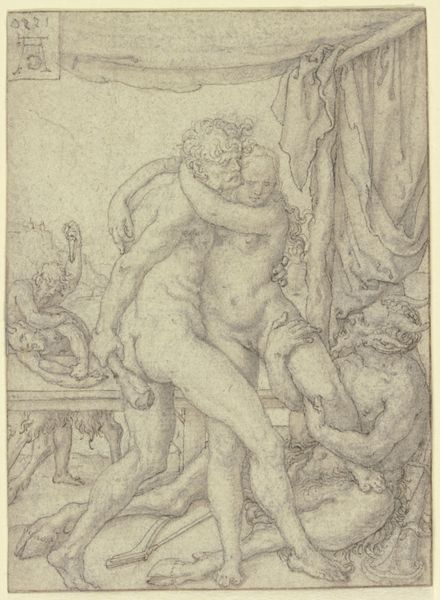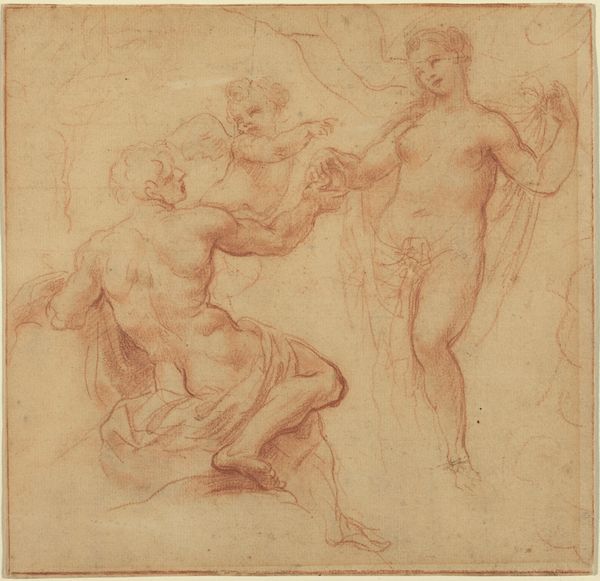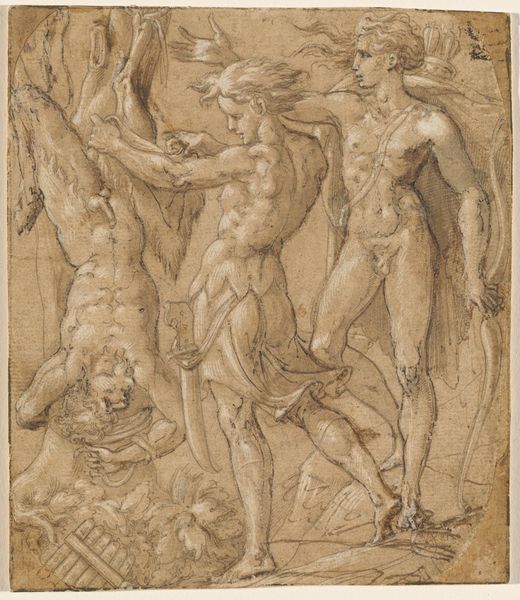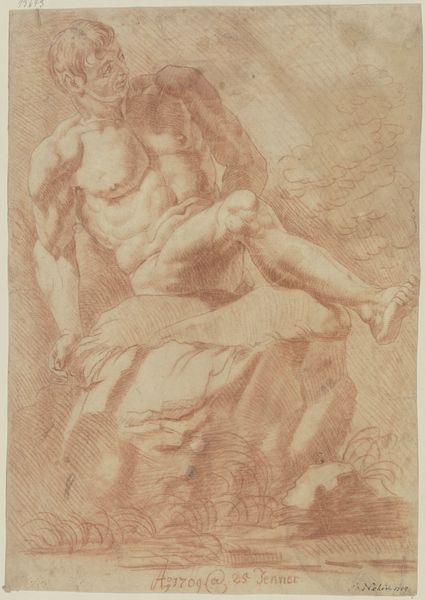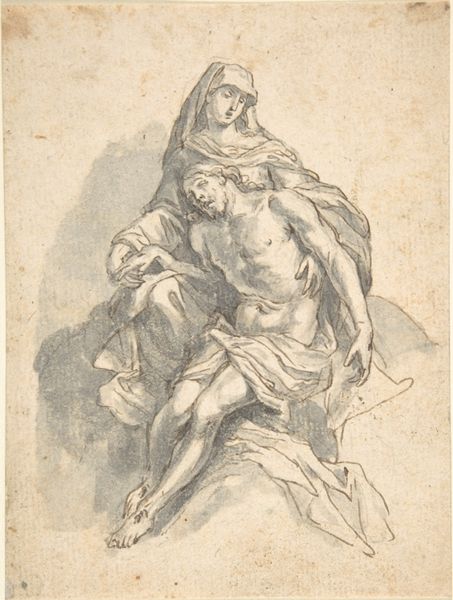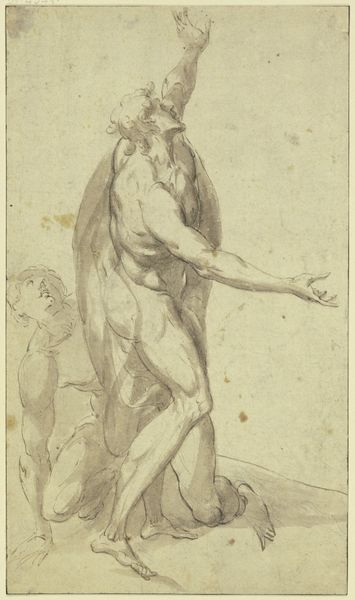
Two Figures (recto); Standing Figure (Young Hercules?) (verso) 1600 - 1700
0:00
0:00
drawing, paper, ink
#
drawing
#
allegory
#
classical-realism
#
figuration
#
paper
#
ink
#
history-painting
#
academic-art
Dimensions: 10-1/2 x 7-3/4 in. (26.7 x 19.7 cm)
Copyright: Public Domain
Curator: What a compelling work, with fluid lines depicting the human form. This drawing, dating roughly from 1600 to 1700, is held here at the Met and titled "Two Figures (recto); Standing Figure (Young Hercules?) (verso)". Editor: It’s instantly melancholic. Look at the seated figure, casually holding what seems like a laurel wreath, while the figure below him seems… defeated, maybe grief-stricken? The lack of vibrant color really amplifies that subdued feeling. Curator: I think your read on the figures’ emotional states is insightful, particularly if we examine the cultural context of the time. Consider how the idealized male form was used to convey complex narratives around power, morality, and even subjugation in the baroque period. It encourages us to examine masculinity's burdens and vulnerabilities. Editor: Burdens indeed! The laurel wreath to me feels almost ironic in juxtaposition to that grounded, sorrowful figure. Like, "Here's your prize, now weep about it." There's something about the simplicity of the ink on paper too... It gives it an unfinished, raw energy. Curator: And the artistic technique of the time certainly speaks to your interpretation. The confident use of line and wash were, for the period, often studies for larger paintings, but could stand alone as philosophical statement using allegory. Editor: So, like a sketch of a feeling, as much as it is a sketch of a figure. Makes you wonder about the artist’s state of mind, right? Curator: Precisely. We see hints of history painting and academic art intersecting. It invites questions around whose history is being depicted, and from what perspectives of privilege or marginalization. The figures raise more questions than they answer. Editor: Totally. You see a classical hero; I see just folks grappling. That's the fun part, isn't it? Taking these old images and re-framing them for our current conversations. Curator: That's it exactly. A great work creates a bridge from the past to our present concerns. Editor: Well, this bridge is making me think. And maybe a little sad. Good art, I guess!
Comments
No comments
Be the first to comment and join the conversation on the ultimate creative platform.
